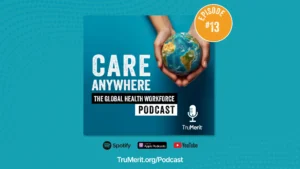When it comes to your community hospital’s bottom line, few things are as impactful as your relationship with your Group Purchasing Organization (GPO). When the partnership works as it should, it can reduce costs significantly by combining your purchase power with that of other members. However, many hospital decision makers don’t utilize their GPOs to its full potential.
Where GPOs Stand Today
The Healthcare Group Purchasing Industry Initiative (HGPII) is an organization that sets and implements principles for GPOs. Since its founding in 2005, member organizations have vowed to uphold HGPII’s standards and ethics, and TPC is proud to be part of the initiative.
In an effort to improve healthcare supply chains, HGPII compiles an annual report to get the pulse of the industry. The twelfth annual report shows today’s professionals just how crucial it is for hospitals and GPOs to work closely together. In the report dated March 2018, more than 600 organizations that use GPOs to support their purchasing needs were studied. The researchers found that 97% of all non-profit, non-government hospitals rely on GPOs, and that 72% of the purchases that these hospitals make come through GPOs. Clearly, these purchasing organizations are vital to the hospitals they serve across the United States.
How GPOs Can Help Your Hospital and Patients
With the power of GPOs in the healthcare industry, it makes sense for community hospitals and other independent organizations to participate. GPOs have become more strategic in their ability to provide their members with access to market competitive pricing for wide array of categories including med/surg, physician preference items, pharmacy, purchased services, laboratory, revenue cycle and capital.
GPOs negotiate pricing for their members using the combined volume of all their partner hospitals to generally obtain significantly better value than individual hospitals can achieve on their own. In addition, GPOs have expanded their roles to provide consulting services to positively impact the utilization of products and services to maximize the overall return back to healthcare systems. The realm of consultative services can include: identifying opportunities to increase the provider’s revenue, working with clinicians to improve standardization and utilization, and using advanced analytics tools to identify variation in clinical protocols. As a result, some research indicates that providers can see an overall cost savings of up to 18%when they join a GPO. In turn, your organization can then pass these savings along to patients.
Beware of Turning Over the Keys
While there are definite benefits to utilizing a GPO at your organization, it’s important to stay in the driver’s seat. Although GPOs are growing in the industry with guarantees of cost reduction, overall healthcare costs continue to skyrocket.
In 2016, the U.S. spent $3.3 trillion on healthcare services. As for hospitals, their spending grew 4.7% in that same year, amounting to over $1 billion in expenditures. Some of these soaring costs could be related to administrators turning too much of their purchasing negotiations over to a GPO.
If you take a hands-off approach to spending, you could see costs creep up and slowly erode your budget. Instead, take time to evaluate your expenditures and GPO structure – identify opportunities to optimize your GPO relationship.
When you are ready to evaluate your GPO contracts, it’s important not to get lost in the weeds. Make a comprehensive examination, but focus on the things that matter most.
Examine market shifts. Are your current purchasing relationships driving the most value possible? From time to time, market conditions create the perfect opportunity to reevaluate how your relationships are defined. Consider altering your strategy and the portions of spend allocated to your GPO by conducting annual business reviews with your GPO and challenging the value proposition that the GPO claims to be providing to you.
Require transparency. When you take a closer look, do all of your GPO-directed contracts add true value to your bottom line? GPOs are essentially incentivized to put as much spend on contract as possible even if it doesn’t add real value to your hospital. Insist on transparency as it relates to the revenue realized by the GPO that results from your purchasing volume being on their contracts. By optimizing your GPO relationship properly, you can better manage your overall operating margin.
Look at direct contracting. While GPOs do generally drive savings for their members, the GPO cost on a set product is not always the best price. Suppliers negotiate with GPOs based on expected or potential volume, which typically does not equate to the lowest price negotiations the way committed volume can. It helps to analyze products by category to determine if additional value can be obtained via a direct contract or a partnership with a regional coalition. The more strategic the purchase, the more value that may be obtained outside of a GPO contract.
How TPC Can Help
At TPC, we know that GPOs play an essential role in healthcare, and we understand that this role is changing rapidly. That’s why we work to ensure that your hospital utilizes these organizations in all the right ways. We keep the control of the GPO in your facility’s hands to help drive the highest value possible. “TPC is passionate about unity. We are single-minded about using our best thinking to chase value,” explains Brandon Beshear, Director at United Regional Health Care System.
TPC has proven success in helping Members better manage their GPO relationships.
By committing to aggregating volume, TPC enables Members to get more from their direct supplier negotiations and GPO relationships – equating to over $230 million in savings since 2010. Furthermore, the oversite that TPC provides ensures that the GPO is actively working for you rather than simply lumping your volume in with other members.
TPC’s programs can help optimize your GPO relationship and the value to your hospital. Get an advocate that’s on your side. See how TPC can help.
Read more at tpc1.com









